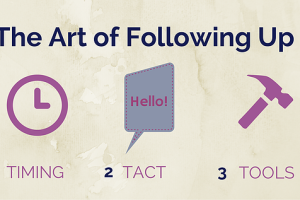Let’s get right into it… you get your prospect on the phone, prepared to give the demo of a lifetime, hoping (no hope is not a strategy), knowing that you are about land the deal that will make you the talk of the entire company. Now let’s fast-forward… and the time comes to give what was just the world’s best sales delivery of unparalleled benefits and features. You totally brought your A game… But then, (uh oh), your prospect ‘no showed’ on your agreed upon follow up meeting. You didn’t even get a ‘running late’ notice before the call. In fact, there is no communication at all. The following day, you decide to take matters into your own hands. You pick up the phone, somehow this time get your prospect on the line, but to your bewilderment that very deal of a lifetime selected another company.
How and why did your amazing demo fail? Will it fail again?
Yes, especially if you can’t understand what happened in the first place.
Here are 4 shocking reasons why your online demo failed (and what you can do about it).
Problem #1 – Your Demo Focuses Too Much on Features
I know you probably think that’s crazy. How could it possibly be a bad thing to focus on the features that your product offers? Features are great. Everyone gets excited when you have that first-to-market feature the market has been clamoring for. However, unless you’re translating those features into solutions for your potential client, then you’re wasting their time. Your product may offer the best calendaring system in the universe. It may have 57 features created by Khronos himself, but if you can’t explain how those features solve a problem for your participant, then your calendaring benefits are useless.
Solution:
Tailor each online demo specifically for each prospect. Your prospect considered you and your product for one reason: they think that you may have the answer to their problems. You can’t solve those problems unless you know exactly what those problems are. Each prospect will have different problems. Do not make the presumption that because one particular type of business has a problem that all similar businesses have the same problem. Your demo won’t fail you if it is designed specifically to solve the problems of the prospect that attends. Find out about their struggles in advance and then use your demo to show how the benefits of your product solve those particular problems.
Problem #2 – You Spend Too Much Time Talking in General
Online demos are a bit like going on a first date. You invite the prospect (or your date) because you think you have something to offer that can enhance their life. You talk to the prospect (or your date) before hand to get to know them a little. When the big day arrives, you talk so much that your prospect (or date) can’t get a single word into the conversation. They are now frustrated and don’t see how amazing you really are. We don’t do business with or marry people because we want them to make our lives more difficult.
Solution:
Ask questions before and during the demo to discover more about your prospect. Practice active listening. Remember, this is the time where you both learn about each other. You need just as much assurance that this will be the right type of client for your business as they need that you will provide the right service for theirs. Use your demo as a time to do more than show your product. Use it as an online collaboration session. Show your value as an individual to build the bridge of future brand loyalty. People want to buy. People do not like to be sold. People buy from people they like and that they trust. We trust people because we feel that we have something in common with them. Make sure that your online demo requires active participation.
Problem #3 – You’re Using Technical Jargon
You want to be seen and respected as industry expert that you are. That, in itself, is not a bad thing. Honestly, you need your prospects to see you as an expert even if you don’t feel like you are one. Business owners want to work with industry experts when it suits their needs and their budget. Don’t mistake expertise with simply using language that is pretentious and unappealing.
Solution:
Use every day language to explain how your product or service is the perfect answer to their needs. You are the industry expert. Your sales prospect is most likely not an expert in your industry (or they wouldn’t be talking to you). Technical jargon turns away business. It can come across as condescending. Without clients, your business is lost. Make sure that you talk about concepts in a way that anyone attending could understand. Speaking with technical jargon with laypersons is archaic and rude. Ask yourself if your mom can understand exactly what you’re showing.
Problem #4 – You’re the Biggest Problem with Your Online Demo
If you are experiencing a problem with conversion to a sale or scheduling a follow up after the demo, you are the biggest problem with that. If your demo is boring and too long, you are the biggest problem causing that. In short, the problem isn’t the online demo. The problem is the presenter and the way the information is given. Don’t be the biggest problem.
Solution:
The solution is not giving the task over to someone else. Just as you are the biggest problem, you are also the best solution. You can make changes that will refine your demos. The right changes will result in more conversions and better client communication. You must present your information in a way that will answer the questions of your attendees. Don’t think that you can just save a Q&A for the end of your session. Find out before the session about the needs and concerns of your prospect. Design your demo with those questions in mind.
Remember, you must always translate your features as direct benefits to the prospect. Show your prospect exactly how what you offer will solve their business problem. Talk to your prospects during your demo – not at them. Encourage participation and questions. Use language that is clear and concise. Be careful not to use terms that people won’t understand. They don’t care how smart you are. They care about whether you can help them with a specific problem. Use the reaction of your prospects to your prior demos to continue to refine your future presentations. All businesses have different needs even if they are in the same industry. Treat the businesses as individuals and customize your demos to meet their needs. You’ll be seen as more than an expert. You’ll be seen as a valuable resource.








